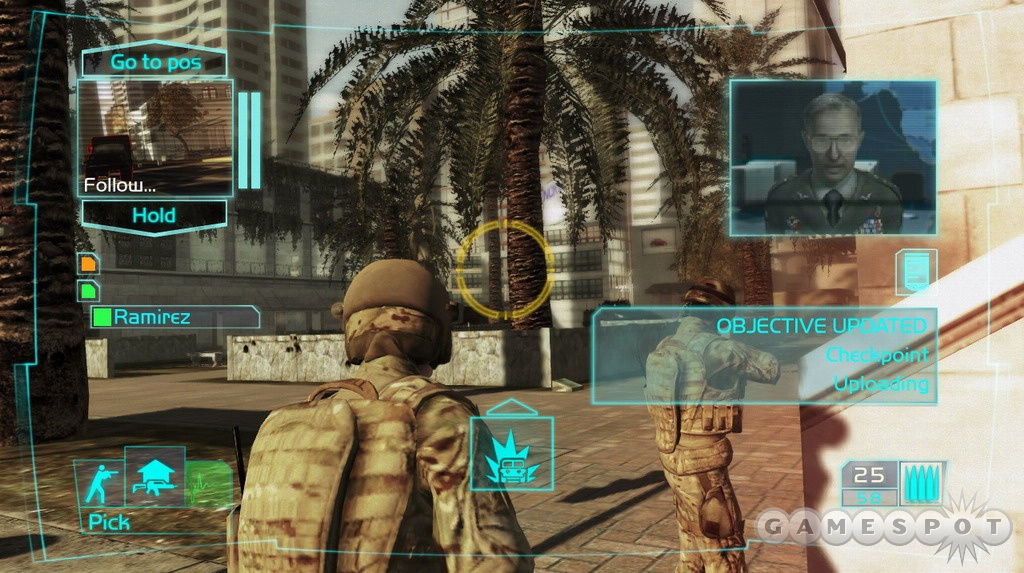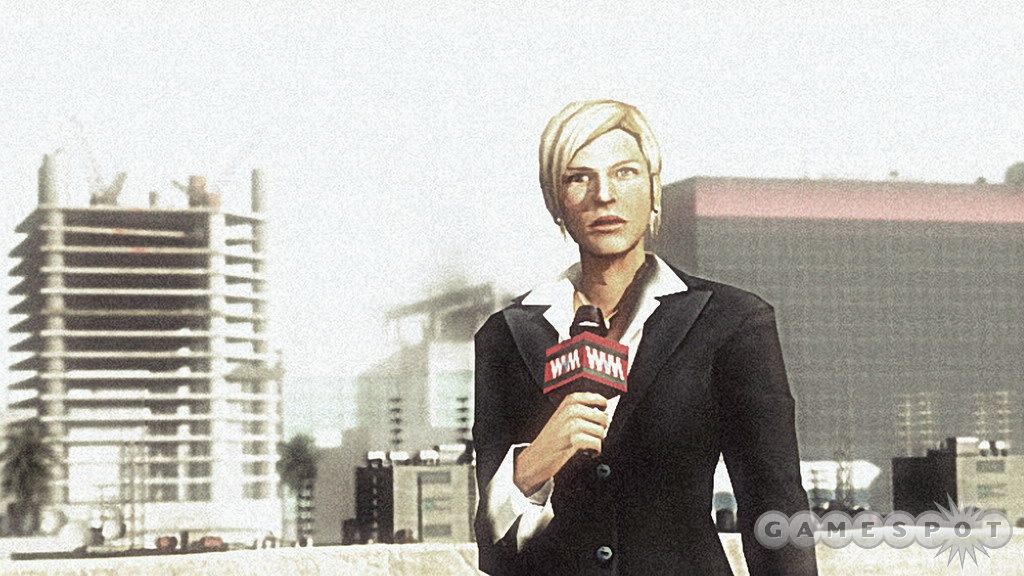Tom Clancy's Ghost Recon Advanced Warfighter Q&A: The Narcom
Stand down, soldier! Ubisoft France's Gilles Matouba takes us inside the narcom, the critical link between Ghost Recon soldiers and command.
It wouldn't be a Ghost Recon game without tons of cool equipment to use when hunting down and eliminating the bad guy--and the upcoming Ghost Recon Advanced Warfighter isn't skimping when it comes to nifty technology. In our previous Q&A, we learned about one of the most important aspects of every soldier's technological arsenal--the cross-com. Working hand-in-hand with the cross-com technology, however, is the narcom, an essential component used when dealing with the game's many non-playable characters. For more details on the narcom, we tracked down Ubisoft France's Gilles Matouba, who serves as GRAW's lead single-player designer.
GameSpot: What is the narcom?
Gilles Matouba:The narcom is actually an extension of the cross-com device, which is also integrated into the HUD. While the cross-com is on the left-hand side of the HUD and is where you command your support forces, the narcom is an extended window appearing on the right-hand side, where your non-playable characters, or NPCs, pop up, giving story-driven information or objectives from command.

GS: How is this used in the game?
GM: It is used primarily to talk the player through the story, giving news flashes from TV news channels and from other support forces. For example, your Apache pilot will feed you key Intel on the changes in location of your objectives. This allows the player to never lose control of his character throughout the game, and he receives Intel and information while remaining fully aware of what is happening on the battlefield.
GS: What real-world tech is it based on?
GM: The military has already developed a 2D system that fits over the soldier's or pilot's eye in a similar way as the cross-com and displays a map and Intel, which they receive via a central computer, allowing the soldier or pilot to receive updated, detailed map information while still being able to see what is happening in front of them and keeping their hands free. Basically a GPS system that they see on a small monocle, this saves them from trying to look at a map or communicating via a radio and, most importantly, it gets them information instantly.
It is not just a military application; the automotive industry has a similar device in development that allows mechanical engineers to receive technical information, updates, and service information while working on a vehicle to analyze problems quickly and efficiently.
Other research programs involve medical applications, which would allow surgeons to carry out difficult surgery procedures while having continual updates on a patient's biological status and other important information relevant to the operation, while remaining fully focused on the patient.
GS: How does it compare to the way it's used in real-world military operations?
GM: Ghost Recon has always been an authentic tactical military shooter; and as it takes place in 2013, we embellished the capabilities of this device and translated it into a gameplay experience. The idea is to give the player additional situational awareness, just like a real soldier, while still remaining focused on the game. We also integrated the command interface into the device to make it more intuitive for the player.

GS: Why so important to get info on the fly?
GM: War happens fast, and your objectives dynamically change. Enemies can change positions and may be leading you into a trap. Intel from UAV drones, for example, can help you to move your teams into positions either via the tactical map or in your cross-com interface to take the upper hand.
GS: How have you made it tie in to story/game narrative?
GM: The story takes place over three days, and the player has a series of missions that he must achieve over this period of time. We wanted to keep the player under a degree of pressure so they really felt they were in the heat of the action. The cross-com allows us to feed the player the story without taking away the control of his character, so when he achieves a mission he immediately receives an update on the situation and is given his next objective. This also means that should something unforeseen happen, the player can react quickly and not have to sit through a long cinematic. We wanted to ensure the player would feel fully immersed on all levels, including the unfolding story.
Got a news tip or want to contact us directly? Email news@gamespot.com
Join the conversation